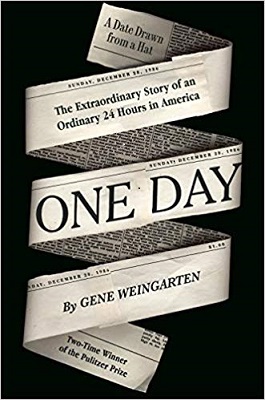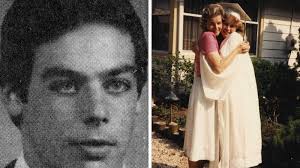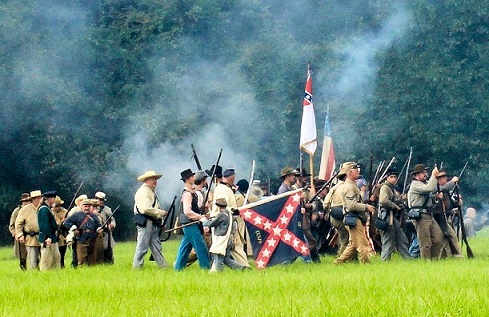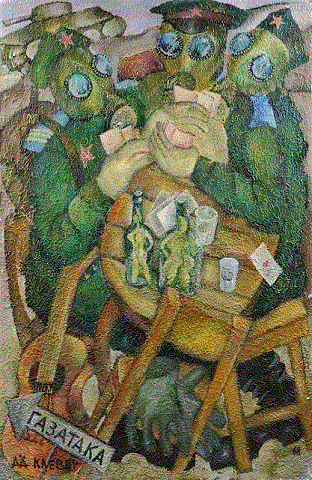 Gene Weingarten, One Day: The extraordinary story of an ordinary 24 hours in America, Blue Rider, 2019.
Gene Weingarten, One Day: The extraordinary story of an ordinary 24 hours in America, Blue Rider, 2019.
Denied entry to the US (who knows why, and welcome to the club),* I must take solace as a writer, traveller, travel writer, in others’ experiences in the creaking monster to the south. In the writings of those ‘lucky’ enough in live there or at least visit at will.
Weingarten starts from literally scratch, pulling a year, month and date out of a hat with scribbled numbers on bits of paper. The only limit was in the year; between 1969 and 1989, ‘far enough in the past to feel like ‘history’ and have a future to explore, but not so far so witnesses would be hard to find.’
He landed on December 28, 1986, at first, in disappointment, as it was a Sunday (bad ‘news’ day) and worse yet, the news doldrums of post-Christmas. But he forged ahead, assuming fate had something to tell him. He started out interviewing a few HSAM (Highly Superior Autobiographical Memory) types he saw in 60 Minutes, but even they drew a blank (!)
But after 6 years of research and writing, it turns out Weingarten hit a winner, though his journalist talent alone could turn a pig skin into a gold mine.
He cleverly sketches out a full range of Americana: lots of murders, of course, but also a historic moment in medicine (longest surviving heart transplant), crazy politics of race (Koch blowing his chances at a fourth term as mayor of New York), miraculous escapes from death, a vicious lawyer turned nice transwoman, lots of ex-soldiers, corrupt police … A page-turner from start to finish.
You can’t help but love all his characters (okay, a couple murderers excepted). And be overwhelmed by the feeling of a huge (too huge) nation wildly careering into a dystopic future, full of half-digested bits of flotsam washed up on the shores of what was once the world’s last pristine continent, and is now … Read it and laugh and cry.

One Day starts with a Romeo and Juliet American-style drama (insanely jealous Mark shoots Karen then himself, but only his brain, so his body is kept alive to allow harvesting the still-beating heart). You witness the delicate, urgent dance with donor’s family, recipient, the logistics of the getting-the-live-heart-to-hospital, then the breathtaking operation itself, all the ifs and buts.
To top it off, a ‘white’ male heart going into a black female body, to the tune of a twangy country ballad, thanks to Lefrak, ‘a liberal northeastern Jewish urban Yankees fan who happened to have a taste for country music.’ 28 years later, Lefrak now retire, a country gentleman volunteering at a local clinic with his wife, and the new heart owner, Eva, once again a nurse, accepting and thankful for ‘Romeo’:
Someone loved someone so hard they couldn’t bear to live without them. [Such a crime] comes out of something good. And something good came out of that.
The creepy, lecherous episode was courtesy of patrolman Craig Peyer, who ambushed young blondes driving alone along a bit of highway near a disused exit, terrorizing them but not going the whole hog until the fateful encounter with Cara Knott, whose training in resisting a rapist ended up getting her strangled and dumped in a nearby canyon.
This was before the days of DNA testing, but there was tons of circumstantial evidence and he was convicted. Peyer insisted on his innocence, but when DNA testing was developed, he refused. A nice irony,
just as Nazis’ meticulous record-keeping created evidentiary problems for them when they faced tribunals of justice, Peyer’s hot pencil had given prosecutor Pfingst a gift. By stopping so many cars that night [for minor infractions, to issue tickets and suss out possible victims], Peyer allowed Pfingst to create a convincing timeline.
Instead of ‘finding a complement in each other,’Cynthia and Don-Paul’s midlife-crisis marriage became ‘an unnerving echo of the darker part of themselves.’ Cynthia was keeping a diary, providing a pre-internet trail of her brief attempt to find love again. 28 years later, she and Don-Paul are still single, her daughter happily married. A dismal but sort-of happy ending. ‘Life is essentially a fatal disease of indeterminate duration. You can either cry at the unfairness of this or laugh at its absurdity.

Ellie Krug is better looking than Ed. Ed’s weak chin is now Ellie’s dainty one. His ferrety beak became a perky nose.
At his center he was not, as he had initially assumed, a man who wanted sex with men. He was a woman who wanted sex with men. And maybe with women, too. It was a complicated landscape.
‘Killer Krug’ was notorious for defending the bad guy in injury cases, but depicted in a Cedar Rapids Gazette special feature on model families with his daughters and loving wife, despite his conflicted identity,
a stratagem, … the suicide bomber technique: You make a heroic video to forced your own hand, using the specter of shame as a threat to preempt cold feet.
9/11/01 was his Damascus moment. A Bostonian, it could have been him on one of those planes. As s/he transitioned (he eventually took the final step), s/he tried to continue his/her prosecution of a ‘victim in a wheelchair, the date of his accident tattooed large on a forearm.’ She no longer had the killer instinct, and Krug Law Firm was kaput. One daughter disowned him/her, but 18 years later was living with Ellie. Ellie has had three short romances, one with a man and two with women, and is lonely.

Michael Green should have died in the home fire, but the blackened lump was scooped up and taken out, nursed back to ‘life’, though with stumps for hands, a horror-movie face, and a body covered in scars. Yet, 28 years later,
He’s adroit with a smart phone. Somehow he types 35 words a minute. The only thing he cannot do for himself, he informs you solemnly, is tie shoes with laces.
He plays soccer and teaches it at a a summer camp for burned kids. He came to Weingarten’s attention when he sued Six Flags Over Texas amusement park near Dallas, demanding the right to ride on the rollercoaster, a story which went viral in 2012. (He lost but ‘is not big on vengeance, but he does figure that he managed to take Six Flags on a scary ride of its own, at least for a little while.’

The enduring anti-black/native racism in America was starkly seen in a battle over a Confederate-era flag of the Jefferson Guard, seized during the Civil War by Illinois, which was returned to Clinton-era Pine Bluff, Arkansas, in a Confederate reenactment,
in full regalia with Civil War-era rifles,’ including a drummer boy. There was nothing official about this: Arkansas had not yet seceded, though the rebel sentiments of the citizenry were clear. This flag could have been absolutely anything, and basically it was a little bit of everything. It all meant what it meant, whatever that was.
‘Amidst all the hundreds of people crowding the courthouse Sunday afternoon, there was not a single black face,’ thought 40% of Pine Bluff was African American. Historian David Perdue told the nostalgia buffs ‘We are one nation now, and we are whole and healthy.’
A very sordid Romeo and Juliet was Teana and Dave, who murdered Teana’s parents and then dumped the bodies over a retaining wall, leaving lots of evidence. The police used a nifty new chemical Luminol which glowed an electric blue under a black light where there were traces of blood, lighting up much of the tiny house.
The 2,800 page court transcript showed Teana trying to play crazy, but student friends related how she was trying to get help for the murder just a few months before, and was totally in control of Dave. Teana claimed she was molested by her father and leant out to orgies, but her devout parents belied this.
The town of Winslow was traumatized and rumors immediately circulated that the pentacostal pastor Kern Qualkenbush was having an affair with Teana’s mother, and he and his wife Velda were involved in Satanic rituals. Their little white house with picket fence was burned and they fled.
Teana was sentenced to only 8 years (she was 16) and Dave got two concurrent 60-year prison terms. Now lesbian, she is happily married to Annette with a step-grandson Malachi, and works at Veterans Affairs, a friend of dog shelters.

A wild, upside-down Romeo and Juliet is Bob Stevenson and a very pregnant Melody Marshall of Cherry Hill, NJ, married in Jamaica 12/28/86. Ten years later, Bob pulverized Melody in a drunken rage, after he eavesdropped to hear she was still an addict, ordering percocet, and at the same, contacting a divorce lawyer. He feared that an increasingly pro-feminist legal system would give her custody of their son Bobby.
They both knew his attack was terrible, and both wanted to stay together, but the court issued a lifetime restraining order. Bob jumped bail, fled and assumed a new identity. Melody followed with Bobby. But their son Bobby was turning into a hockey star, and team members in Redondo Beach CA (Bob moved to the second best center for kids’ hockey) soon identified him as Bobby Stevenson. ‘No,’ Bobby said. ‘I’m Bobby Ryan.’ No one squealed, but the jig was up in 2000 when Bob foolishly used an old credit card. American-style justice followed:
4:45am a SWAT raid when a 20-member team of federal marshals broke in the door. They had automatic weapons and riot shields.
Bob ‘Ryan’ got 5 years ('Light or harsh? Maybe common sense.’) and was out on parole in 2005, when he took Bobby to Ottawa for the National Hockey League Entry Draft, where he was picked up. A news photo showed Bob and Bobby grinning together, a no-no, and Bob was put under house arrest for 18 months. In 2014 Bobby Ryan hit the hockey jackpot with a $50 million, 7-year contract with the Ottawa Senators. The restraining order was never formally rescinded but ‘love conquers all.’ Or maybe a child. ‘The one thing they shared with equal passion was love for their son and concern for his well-being.’

A cold shower on 12/28/86 was the much-hyped Aeroflot full of Russian Americans returning to the Soviet Union, in ‘the final momentous, pitiful last days of the Cold War.’ Weingaren highlights Valery Klever, his wife Lidiya and daughter Karina. Klever, a famous dissident artist, and family were expelled in 1977 and he/ they hated life in America. They returned to Moscow and he died shortly after. Weingarten captures the poignancy and nasty subtext of Valery’s art: like Bulgakov’s 1930s novel
Master and Margarita, where people aren’t ‘disappeared’, they literally disappear---poof!---in the middle of the street and no one seems to think there is anything unusual about it. Unsubtle but also plausibly deniable.
His wife and daughter returned to the US, where both Lidiya and Karina became high power IT businesswomen, loving and hating America.
Karina Klever: The Soviet Union infantilized people. You became entitled, compliant, complacent. On perpetual welfare, given the basics, but not well off. You learned to accept that.
Most of these vignettes show a fatally flawed country, with too much freedom, no responsibility, lives laced with tragedy -- a son dying in a freak Jet Ski accident, Jerry Garcia destroying himself on crack etc, gruesome murders, guns and more guns. Lots of prison, but also with healing and the up side of prison -- removal from the scene of ongoing crime, the chance to complete high school, even university, eventually building a new life -- all starting from some seemingly chance event on 12/28/86.
A nation of lonely people in dysfunctional situations. Where there are often worse things than being alone, occasionally better ones.
*My fateful attempt to experience the underbelly of the beast firsthand was a bike trip along the south shore of Lake Erie to the legendary Chautauqua (of Zen of Motorcycle Maintenance fame) and on to the eastern Grand Canyon, Letchworth State Park. I recommend this bike trip to any Canadian (anyone) who doesn’t fear Homeland Security’s Guantanamo-style greeting at any Port of Entry (all passports are on DHS computers). I had ‘booked’ several couchsurfing nights; the locals are generous, if mostly poor, this backwater being one of the many post-industrial failures, where only skiers and wanderers thrive. I hope none of my ‘contacts’ suffered for knowing me.
Other documentarists of America’s slow, fitful and often outrageously violent decline are Linh Dinh’s Postcards from the End of America , Belen Fernandez, Exile: Rejecting America and Finding the World, on native experience, works by Estes, Treuer.